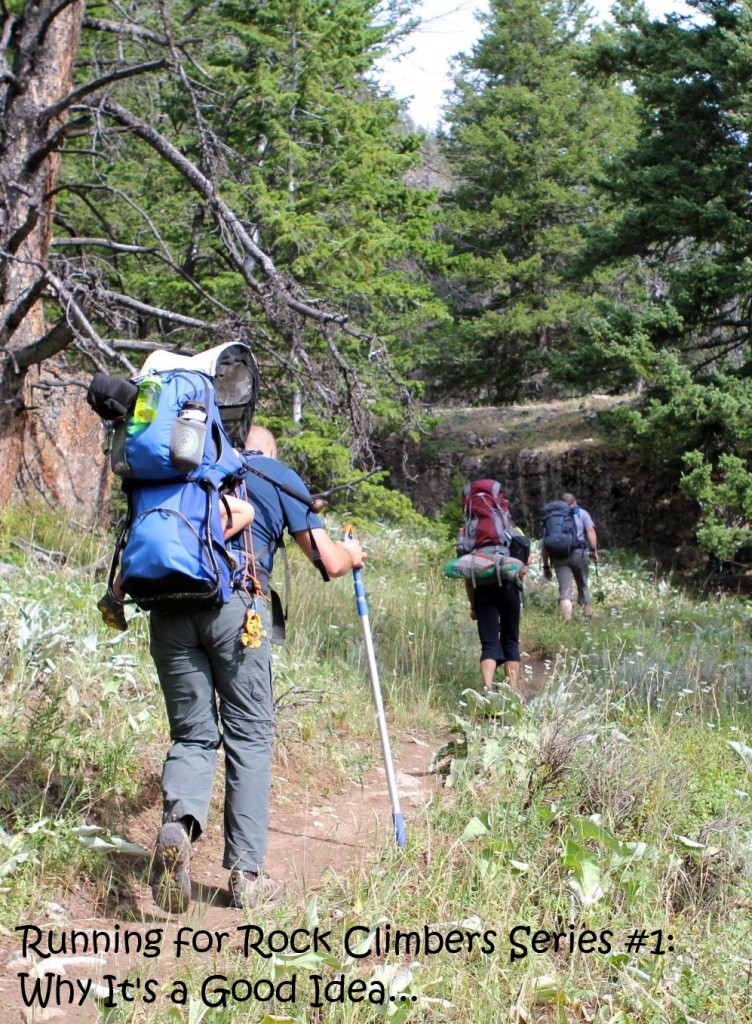Running For Rock Climbers Series #1: Why It’s a Good Idea
Just like not everyone who climbs is a “climber,” not every one who runs is a “runner,” and I’ll be the first to admit that I’m the former, not the latter! And while most people probably can guess that rock climbing is great exercise, it’s not all-inclusive, so for me running has always played a smaller but very consistent role in filling in the “gaps” in my fitness regimen. I run 3 or 4 days a week outside, year round, generally not on the same days that I climb. I do not run far, nor do I run particularly fast – usually around 3.5 miles in 30 minutes or so. I like it because its the easiest and most efficient form of exercise I can do with a toddler around. Aside from the numerous general benefits that come from increased cardiovascular health, I’ve noticed that running offers a few climbing-related bonus effects that are helpful as well.
1. RELAXED APPROACHES. Admittedly I’m not the fastest hiker in the world, but it’s nice to be able to carry on a conversation with your climbing partners on the way to the crag without sucking wind. If I REALLY wanted to make a difference in my SPEED however, I’d probably get better results by throwing on a weighted pack or vest and doing rounds on the stairmaster.
2. VISUALIZATION. One of the reasons I enjoy running is because it gives me a chance to zone out and let my mind wander. After processing through the day, my thoughts invariably lead to climbing, and whatever route is next on the chopping block. I think about specific crux sequences and try to remember my move for move beta. It might sound a little like mystical mumbo jumbo, but I think visualizing success on a climb can provide a psychological advantage.
3. PUSHING PAST YOUR COMFORT ZONES. At certain points during my run I step up my pace and sprint (especially if I’m nearing the end and realize I’m on pace to beat my previous record!) Entering into that anaerobic sprint zone gives my body a chance to practice pushing past its comfort zone, which is not entirely unlike the feeling of pushing past a burning forearm pump on a redpoint run of a hard and sustained route. This is just my theory of course, but I think the more time spent above that comfort threshold, the more prepared you’ll be to push past it on the rock.
4. WEIGHT CONTROL. If you find yourself struggling on overhanging climbs because you’re a little soft around the edges, running is a very efficient way to torch some calories. As for me personally, I’m not trying to lose weight, but the Crag-Daddy has recently shed a few pounds (increased cardio as well as dietary changes) and is crushing just about everything he touches, so I can tell you from firsthand observation this one works!
Again, running definitely has plenty of merit as a stand alone sport, but picturing the tangible ways it helps me specifically as a climber is often more motivating than reading generalized statistics about how it makes my heart happy (although that should be a major plus for everyone!) Speaking of motivation, the next installment in this series will focus on that very topic! So if you need a little mental help getting up off the couch, come back tomorrow for 5 tips to get you on the move…




2 Responses to “Running For Rock Climbers Series #1: Why It’s a Good Idea”
I know running has not only helped with my hiking endurance somewhat, but also with my motivation to improve my flexibility. When I get off the treadmill or finish a run, I usually feel more inclined to stretch my muscles, as it’s definitely less painful since I’m actually warmed up!
I can definitely testify that dropping even a little weight with cardio can lead to surprising gains.